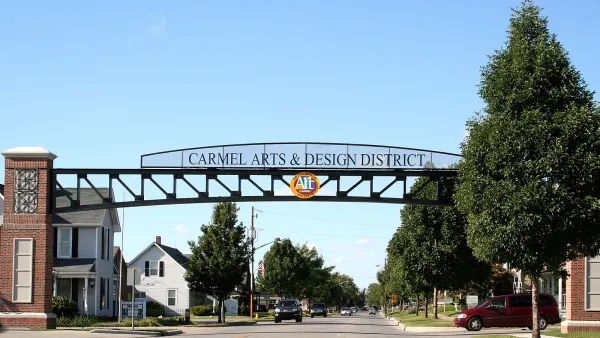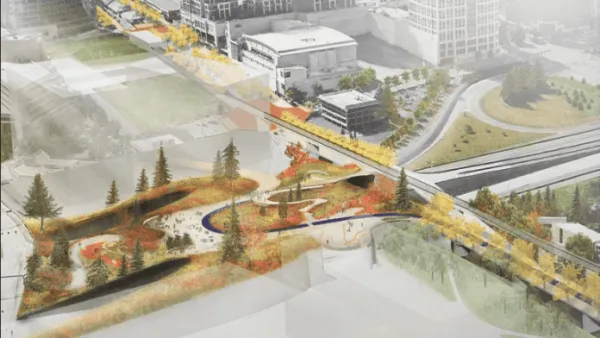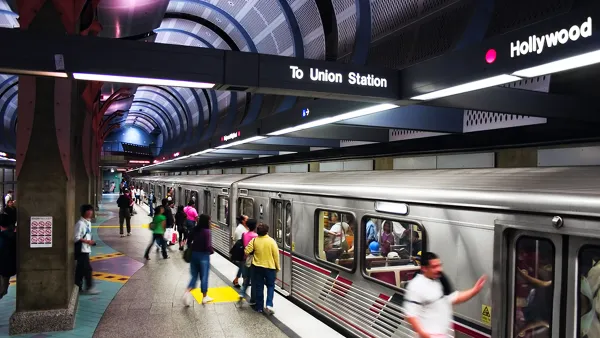A detailed case study of Kokomo, Indiana, which has achieved an impressive record of investments in streetscape and other capital projects, even as it struggled to deal with the effects of the recession.
Aaron M. Renn examines the case of Kokomo, Indiana, a small industrial city of 57,000 people 45 miles north of Indianapolis, to test the "cut to invest" paradigm supported by Bruce Katz at the Brookings Institution. "The idea is to cut spending on operations and lower priority items in order finance investments in higher priority infrastructure or other projects."
Here Renn summarizes recent changes in Kokomo:
What I discovered is that Kokomo has done a lot more than just build a trail. They’ve deconverted every one way street downtown back to two way, removed every stop light and parking meter in the core of downtown, are building a mixed use downtown parking garage with a new YMCA across the street, have a pretty extensive program of pedestrian friendly street treatments like bumpouts, as well as landscaping and beautification, a new baseball stadium under construction, a few apartment developments in the works, and even a more urban feel to its public housing.
Renn notes that all of these projects were achieved with an admirable attention to design details and while paying in cash. The article goes on to provide images and detailed analysis of the choices the leadership of Kokomo has made in deciding to invest and where to cut.
FULL STORY: Cutting To Invest In Kokomo, Indiana

National Parks Layoffs Will Cause Communities to Lose Billions
Thousands of essential park workers were laid off this week, just before the busy spring break season.

Retro-silient?: America’s First “Eco-burb,” The Woodlands Turns 50
A master-planned community north of Houston offers lessons on green infrastructure and resilient design, but falls short of its founder’s lofty affordability and walkability goals.

Delivering for America Plan Will Downgrade Mail Service in at Least 49.5 Percent of Zip Codes
Republican and Democrat lawmakers criticize the plan for its disproportionate negative impact on rural communities.

Test News Post 1
This is a summary

Test News Headline 46
Test for the image on the front page.

Balancing Bombs and Butterflies: How the National Guard Protects a Rare Species
The National Guard at Fort Indiantown Gap uses GIS technology and land management strategies to balance military training with conservation efforts, ensuring the survival of the rare eastern regal fritillary butterfly.
Urban Design for Planners 1: Software Tools
This six-course series explores essential urban design concepts using open source software and equips planners with the tools they need to participate fully in the urban design process.
Planning for Universal Design
Learn the tools for implementing Universal Design in planning regulations.
EMC Planning Group, Inc.
Planetizen
Planetizen
Mpact (formerly Rail~Volution)
Great Falls Development Authority, Inc.
HUDs Office of Policy Development and Research
NYU Wagner Graduate School of Public Service





























